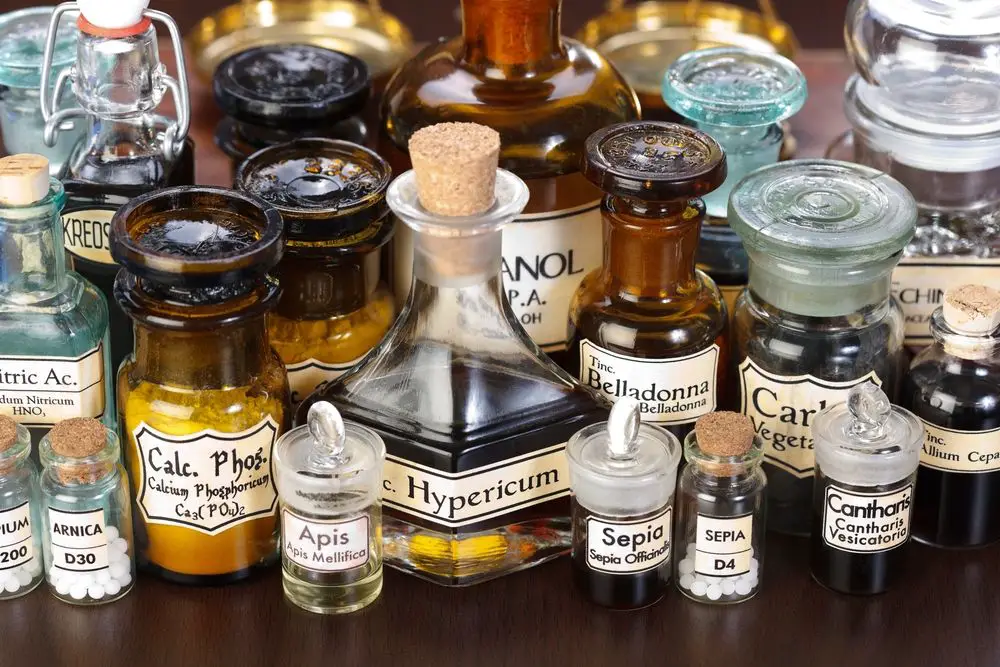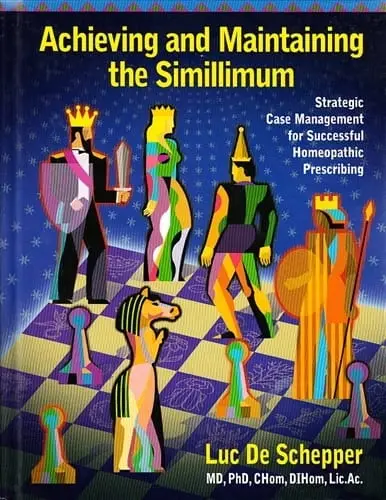After hearing so much about her, I was very anxious to read the Hpathy.com interview with world-renowned homeopath, “Dr. Mallory Gallery”.
Her interview began with a gripping tale of how she suffered her entire life due to the effects of vaccines and other pharmaceuticals; in fact, this is a familiar story to many of us, a common thread that runs through our lives to a greater or lesser degree: migraines, chronic fatigue, asthma, food allergies, etc.
By the time Dr. Mallory hit her 30’s, she realized that orthodox medicine was not helping her at all! In fact, she concluded that her once beloved drugs were actually making her worse! She stopped them and set out on a journey into the world of Alternative Medicine.
When she finally found homeopathy, one dose of one of our famous “polychrests” made her 50% better from all her ills—in less than a month’s time! So impressed was she with homeopathy that she embarked on a serious study of it. I think we can all relate to that.
Dr. Mallory’s credentials in homeopathy were astounding! She studied with Lou Klein, Andre Saine, Jeremy Sherr and many others whose names would be familiar to all of us, and, of course, she got her certification in Classical Homeopathy.
With credentials like these, how could she go wrong? Well, let’s see….
She talks about becoming a practitioner, practicing “Classically”, of course, as she was taught by the likes of the masters above.
She took the long, two-hour, constitutional cases and warned her patients that if they took remedies for one thing and another while under constitutional care, it could spoil their case.
But guess what? A number of her patients did just that! Injuries, colds, etc., and they took remedies for them!
Dr. Mallory was perturbed and exasperated over finding this out, but the results were undeniable! The patients who “cheated” did better than the ones who didn’t! In her interview, she expressed shock and dismay over her so-called “classical training”—namely, that the world would come to an end if a patient dared to take remedies during constitutional care. In fact, it was becoming clear to her that the exact opposite was true!
This brings me back to the title of this article, “What Is Classical Homeopathy?” because it appears that the only ones practicing it were Dr. Mallory’s patients!
Yes, they were right! It’s in The Organon, it’s in Kent’s Lectures. You’re SUPPOSED to treat acutes, even if you have been given a constitutional remedy!
Let’s set the record straight right away. What does Hahneman say?
Aph. 248:
One proceeds in this way as long as the patient continues to feel steady improvement and does not experience any significant symptom that he has never had before. Because if he does…then another medicine more homeopathically appropriate must be chosen. [Hahnemann’s emphasis]
Did you see that? Oh my goodness, Hahnemann underlined that himself! He wanted to make sure you heard it: If you get new symptoms, from whatever cause or reason, while on constitutional treatment, you have to stop and give the appropriate remedy! And he goes on to say in the same paragraph:
[The new remedy must be administered] — of course… never without the solution being somewhat modified before each dose with the necessary strong succussions to slightly increase its degree of potency.
He’s saying the remedy has to be in water and succussed before each dose! Is ANYBODY doing that? Who? Please let me know. Are you succussing your bottle an average of five times before each dose? Here’s a video showing you how to do that:
(P.S. Don’t feel you have to go to the extra “cups” as shown in the video. You can, if you’ve got a hypersensitive patient, but normally, you would take a sip from the bottle or the bottle cap or pour a swallow’s worth into a small dixie cup and take your dose from that.)
How many of you are simply giving pellets every time? That is not “Classical”! Hahnemann has a reason for this: repeating the exact same potency over and over again leads to “tolerance”. The remedy will stop working, and may even aggravate or cause a proving! (Aph. 247) So he is absolutely adamant about this: 2-12 succussions before each dose, depending on the sensitivity of the patient. Why do we have to do this?
Hahnemann wants the remedy to get stronger and stronger as you go, to keep pace with the “push-back” from the disease! Diseases are not passive entities that willingly relent just because you gave a remedy. They try to survive, they fight back!
In fact, when your bottle is down by 90%, refill with water half way (you can’t succuss a full bottle) and succuss 40 times to make the potency one degree higher — again because your dosing needs to get stronger and stronger as you go.
What about aggravations, what does Hahnemann say about that? Most of our “classical” homeopaths are happy to see an aggravation, as it means, to them, that the Vital Force will recover, rebound, and make such fast work of the disease that there will be no relapsing ever, just the total and complete destruction of the disease once and for all!
Well, you know, prescribing in this manner has its place, especially in acute prescribing. But in chronic disease? No! Hahnemann did not want it! (Aph. 161) The high C potencies were too violent, he said. What if the Vital Force doesn’t bounce back?! What then?
Here’s what he said in…
Aph. 270, footnote f:
When the ratio of dilutant to medicine is as low as 100:1 [the C potencies, in other words], if very many succussions are, as it were, forced into it by a powerful machine, we obtain medicines that, especially in the higher degrees of dynamization, act almost instantaneously but with intense, even dangerous, violence, particularly on delicate patients, without bringing about the permanent, gentle counter-action of the vital principle [vital force].
No bounce-back, he just said. He prefers the daily doses of low potency in chronic disease. (As always, in water with roughly 5 succussions before each dose; and sure, your potency will expire from time to time and have to be raised, but, there is no violence or shock to the system in going from 6C to 9C or 9C to 12C.) So he’s saying that in the C-scale, the higher you go in potency, the more violent your remedies become. Now, in a sudden, high Belladonna fever, your high potencies are very appropriate. But in chronic disease, there is no guarantee that the Vital Force will bounce back should there be an aggravation! Especially if your patient is delicate or debilitated.
Listen to what he says in Aph. 276:
In strong doses, the more homeopathic the medicine and the higher its potency, the more harm it does. Indeed, it is far more harmful than equally large doses of unhomeopathic medicine. … Excessively large doses of an accurately selected homeopathic medicine, especially if frequently repeated are, as a rule, very destructive. Not infrequently, they endanger the patient’s life or make his disease almost incurable.
Well, this should make us think of the Banerji Protocols, where numerous remedies are prescribed at once in mostly high potency for an arbitrary number of days or weeks where no instruction is given to stop dosing if you get either strikingly better or worse. What Hahnemann said about giving more than one remedy at once: “It’s impossible to predict just how they might interfere with each other.” (Aph. 274)
Now, as always, I have to qualify all my remarks about the Banerji Protocols by reminding people that the Banerjis see 1,000 patients a day! They cannot do constitutional prescribing, even Robin Murphy, when he volunteered for Homeopaths Without Borders after the earthquake in Haiti, said that seeing 50-100 patients a day meant, “Constitutional Homeopathy is worthless under such conditions!” You pretty much prescribe on the diagnosis, and that’s what the Banerjis do; again, out of necessity.
BUT, Hahnemann is very clear in Aph. 171 that in chronic disease, you cannot leave your patient alone after the first prescription and order him, as doctors do, to come back in a month. He says that after the first remedy has completed its action, the symptoms that remain have to be prescribed on, so you have to retake the case, and there will surely be a succession of remedies called for until the patient is finally well. How can you know what these remedies are in advance or when they will be needed without constant monitoring? “Let me know what happens,” is the way I end every email to a patient, because I need to know what the next step will be! But there is little-to-no monitoring in the Banerji Protocols. In fact, if you read my article on the Banerji Protocols, you’ll see that the last patient, on hearing about the second patient’s experience, said the following:
“Oh my goodness, this is all too familiar: can’t get a hold of her, bad reactions, can’t ask questions, can’t ask what remedies do.”
And there is little-to-no monitoring in what is viewed to be standard “classical homeopathy” either, namely: one dose of your constitutional remedy in high potency and come back in a month.
Also, I have a feeling there is a difference between the way the Banerjis are prescribing in their home country of India, and the way their followers around the world are “mal-adapting” the Banerjis’ protocols to the detriment of their patients. I have gotten some very bad reports from patients as I’ve shown above, who google “homeopathic aggravation”, find me, and say their practitioner is doing the “Banerji Protocols”. Then they show me a jaw-dropping list of remedies they’ve been told to take in arbitrary potencies for arbitrary lengths of time. For example: Gelsemium 10M 4 times a day for 4 days. A combo of Arsenicum/Aconite 30C 3 times a day for a week. No advisories about stopping if you get worse or if there’s a striking improvement.
The same patient I quoted above also said,
… it also strikes me that she never has follow-up questions for me on my follow-up appointments, is this normal?
No! There is absolutely nothing normal or, needless to say, “classical” about any of this!
Also, as per “protocols”, too often, homeopaths seem to be wanting to imitate doctors as a way of looking more “professional”. Doctors almost always have a “protocol”: “Take your medicine 3 times a day for a week,” they might say. Everybody gets the same instruction; but there’s a reason for that: The reason is that often, in allopathy, the medicine is attempting to kill something: a virus, a bacterium, a fungus. They know how long it takes for certain organisms to die. We are not trying to kill anything! Our own immune system does the killing, the homeopathic remedy merely alerts the immune system to the problem.
We have a different set of instructions, including: If you get worse, stop dosing! (Aph. 248) An improvement may follow if it’s the right remedy. And again, most of us don’t have to prescribe on the diagnosis alone, hoping that we get it right. We don’t see 1,000 patients a day. So why should we act as if we do?
But let us return to the interview. By now, Dr. Mallory is thinking that Hahnemann and Kent were wrong!
Well, we’ve mentioned Hahnemann already, but what did Kent have to say about giving remedies for acutes while under constitutional care?
“The Examination of the Patient” from Kent‘s Lectures on Homeopathic Philosophy:
When an individual is suffering from a dangerous crisis, a serious accident or emotional trauma, or a virulent acute miasm [an infection like the flu], the treatment of choice is the acute remedy or acute inter-current.
Oops. It looks like Kent agrees with Dr. Mallory’s patients! He’s saying if you’re on constitutional treatment, and you’re in an accident or you get the flu or have an emotional upset, you have to give the appropriate acute remedy! I don’t know how all of Dr. Mallory’s esteemed teachers missed this, but, boy, did they ever!
Dr. Luc De Schepper adds:
As you can see, here Kent follows Hahnemann and lays to rest those modern myths of not treating acutes while you’re treating a chronic disorder.
(Achieving and Maintaining the Simillimum , p. 113)
Ouch! Well, that about seals it!
But what else are people thinking isn’t “Classical”? How about… giving more than one remedy in a case?
In the interview, Dr. Mallory very proudly gives an example she constructed of a mythical patient named “Bob”. Bob’s wife walks out on him, but not before he gets run over by a car while mowing his lawn, whereupon he is taken to emergency surgery, given antibiotics through an IV line that gets infected, on top of which he gets MRSA while recovering in the hospital for which more antibiotics are given, and all of this to show the absurdity of a “classical” homeopath taking a 2 hour case, and giving Bob his constitutional remedy! Luckily, Dr. Mallory knows better! But you know who else knew better? That’s right—Hahnemann!
Aphorism 40 of The Organon talks about “Complex Disease”, which means that the patient has more than one “disease” going on in his body at the same time.
In Aphorism 42 he states:
As we have seen in paragraph 40, nature sometimes allows, in certain cases, the coexistence of 2, even 3, natural diseases in one and the same body.
Then, in Aphorism 40, he says:
…their cure is completely accomplished by the timely alternation of the best…remedies.
You have to alternate the remedies that match each separate disorder, that’s what Hahnemann is saying.
In other words, some illnesses have nothing to do with each other, just the way Bob’s MRSA had nothing to do with the Ailments From grief caused by his wife’s departure, which in turn had nothing to do with his infected IV line or his Ailments From blunt trauma.
Appropriate remedies in alternation will be required for each of these.
Bottom line: Hahnemann knew about this! People think they’ve discovered something new all the time, only to find out… oh yeah, Hahnemann knew about it! It’s in The Organon, or it’s in Chronic Diseases, or it’s in Kent’s Lectures. But no one wants to read these old books. People claim the Organon is nothing but a “dusty old Bible”, as Dr. Luc has said. He also said, “Don’t try to be smarter than Hahnemann — no matter what experiment you might think of, he tried it!”
(Achieving and Maintaining the Simillimum, p. 41)
Listen, as you might have gathered by now, there is a big chunk missing out of our homeopathic education! And who better to fill in that gap than one of our greatest scholars in Classical Homeopathy, none other than Dr. Luc De Schepper! I am recommending that everyone buy his book as shown below, so that you can learn to become a truly great and real Classical Homeopath:
If you’re looking for answers regarding remedy selection, case management, potency, frequency of repetition, etc… it’s all there! Here, on page 63, he seems to be referencing Aph. 171 which I wrote about above:
…it is not a rarity that, after one simillimum, symptoms change — even during the same day — requiring a new remedy…. For example, a patient has a dry cough, dry mouth, is thirsty for large amounts of water, constipated, holds his chest when he coughs. Bryonia is indicated. This one dose of Bryonia is able to push the disease outward from the lungs to the nose. Now the patient has a runny nose with excoriating discharge, thirst for cold sips with restlessness and impatience. Arsenicum is now indicated. So, do not automatically repeat the [original] remedy unless the symptoms return unchanged. You must warn the patient of this scenario too. He needs to consult you immediately if the symptoms change. One warning though from Kent: “It is an error to think immediately of a new remedy when a symptom picture is changing. The physician must wait for permanency or firmness before making a new prescription.”
So interesting! This book is full of gems! Someday we’ll talk more about it but right now I have to cook dinner.
Bye-bye! See you again next time!
___________________________________
Elaine Lewis, DHom, CHom
Elaine takes online cases. Write to her at [email protected]
Visit her website: https://ElaineLewis.hpathy.com







So interesting! These are all important points. The only protocol I’ve used on myself was taking loads of Lycopodium and Bromium for my hypothyroid condition. I think it included Lyc 200c twice a day. Not too surprisingly, I ended up becoming terribly depressed. I even missed our neighborhood get-together because I couldn’t stop sobbing. I knew it was the protocol causing the depression because as soon as I stopped it the depression disappeared. (And, unfortunately, my hypothyroid prob is still with me.) Thank you for helping us understand The Organon, Elaine! P.S. What was the polycrest that made 50% of the patient’s ills go away? My guess is Camphora.
Thanks for your comment, Linda! The remedy that took away 50% of Dr. Mallory Gallery’s chronic ailments was Nux vomica. Where did you get the protocol for hypothyroid? Lyc. 200C twice a day? For how many days? What was the Bromium potency? Which one caused the depression, do you know? This is what’s passing for “homeopathy” nowadays!
Dr Mallory, you have expressed the aphorism very nice way. You are requested to express all the aphorism in a practical way as to layman can understand .
Thank you
Hi Madan, I am not “Dr. Mallory” but rather, Elaine Lewis, but, be that as it may, I have already written lots of articles on translating the Aphorisms of The Organon, such as this one:
https://hpathy.com/homeopathy-papers/tidbits-24-organo-phobia-fear-of-reading-the-organon/
An important highlight of classical homeopathy is the correct admiration of dose, well written and especially the video demonstration makes it easy for me to share with my patients. Thank you dear Elaine!
Thank you! Yes, it’s true, that video is really helpful!